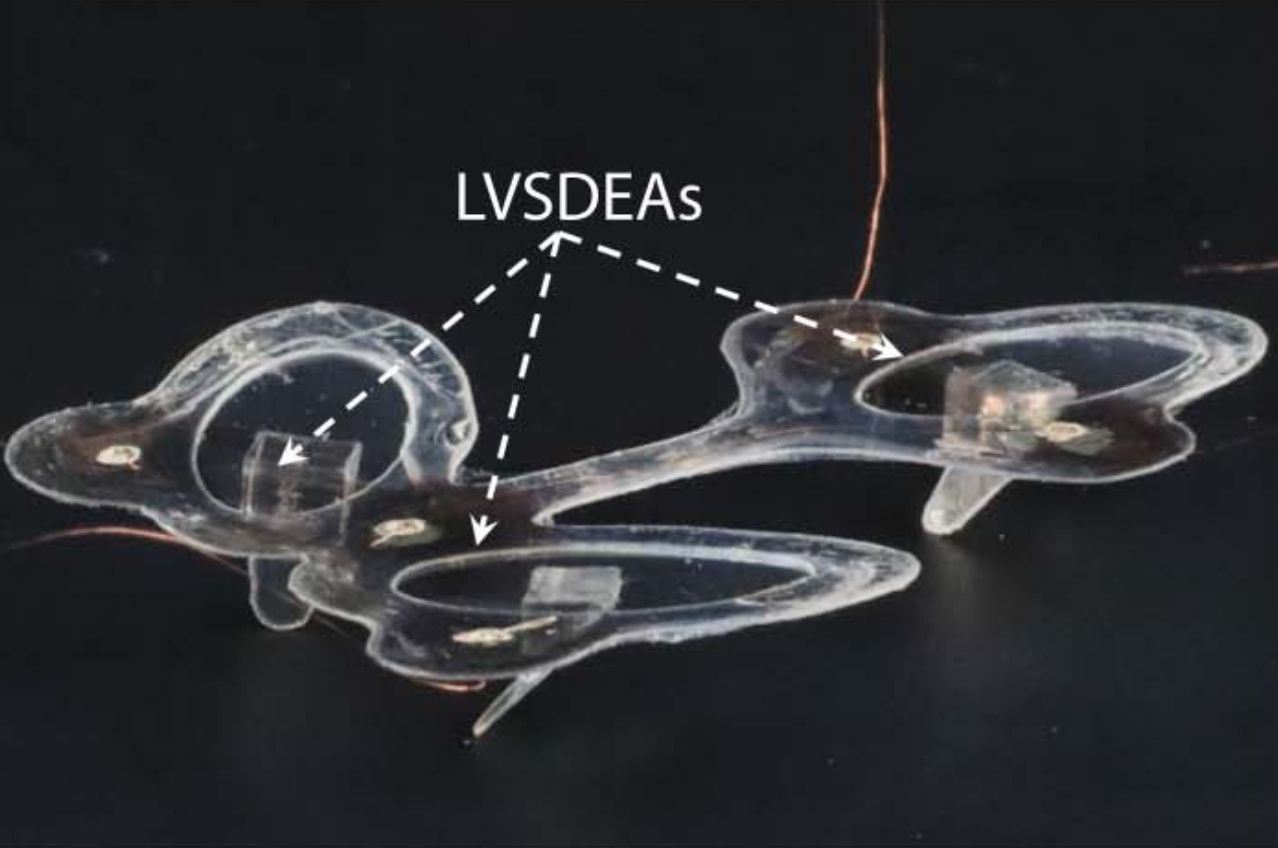Smash This Robot
Researchers at EPFL have developed a soft robotic insect that uses artificial soft muscles called dielectric elastomer actuators to drive tiny feet that propel the little bot along at a respectable speed. And since the whole thing is squishy and already mostly flat, you can repeatedly smash it into the ground with a fly swatter, and then peel it off and watch it start running again. Get ready for one of the most brutal robot abuse videos you've ever seen.
We're obligated to point out that the version of the robot that survives being raged on with the swatter is a tethered one, not the autonomous version with the battery and microcontroller and sensors, which might not react so well to repeated batterings. But still, it's pretty cool to see it get peeled right off and keep on going, and the researchers say they've been able to do this smash n' peel eight times in a row without destroying the robot.
Powered by dielectric elastomer actuatorsOne of the tricky things about building robots like these (that rely on very high-speed actuation) is power-the power levels themselves are usually low, in the milliwatt range, but the actuators generally require several kilovolts to function, meaning that you need a bunch of electronics that can boost the battery voltage up to something you can use. Even miniaturized power systems are in the tens of grams, which is obviously impractical for a robot that weighs one gram or less. Dielectric elastomer actuators, or DEAs, are no exception to this, so the researchers instead used a stack of DEAs that could run at a significantly lower voltage. These low-voltage stacked DEAs (LVSDEAs, because more initialisms are better) run at just 450 volts, but cycle at up to 600 hertz, using power electronics weighing just 780 milligrams.
 Image: EPFL Each soft robot uses three LVSDEAs to operate three independent legs.
Image: EPFL Each soft robot uses three LVSDEAs to operate three independent legs. The LVSDEA actuation is converted into motion by using flexible angled legs, similar to a bristlebot. One leg on each side allows the robot to turn, pivoting around a third supporting leg in the front. Top speed of the 190-mg tethered robot is 18 mm/s (0.5 body-lengths/s), while the autonomous version with an 800-g payload of batteries and electronics and sensors could move at 12 mm/s for 14 minutes before running out of juice. Interestingly, stiffening the structure of the robot by holding it in a curved shape with a piece of tape significantly increased its performance, nearly doubling its speed to 30 mm/s (0.85 body-lengths/s) and boosting its payload capacity as well.
What we're all waiting for, of course, is a soft robot that can be smashable and untethered at the same time. This is always the issue with soft robots-they're almost always just mostly soft, requiring either off-board power or rigid components in the form of electronics or batteries. The EPFL researchers say that they're "currently working on an untethered and entirely soft version" in partnership with Stanford, which we're very excited to see.
[ EPFL ]